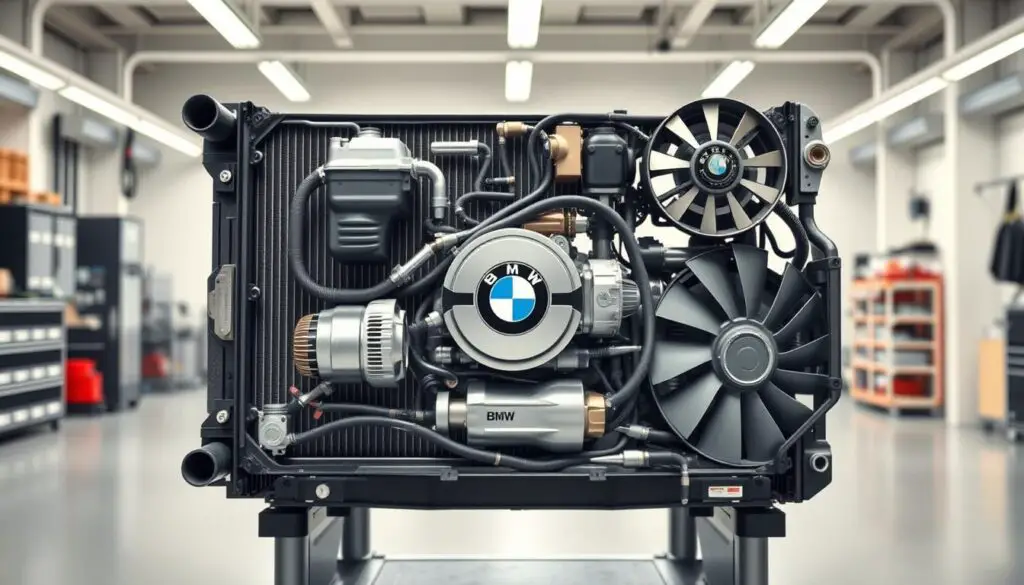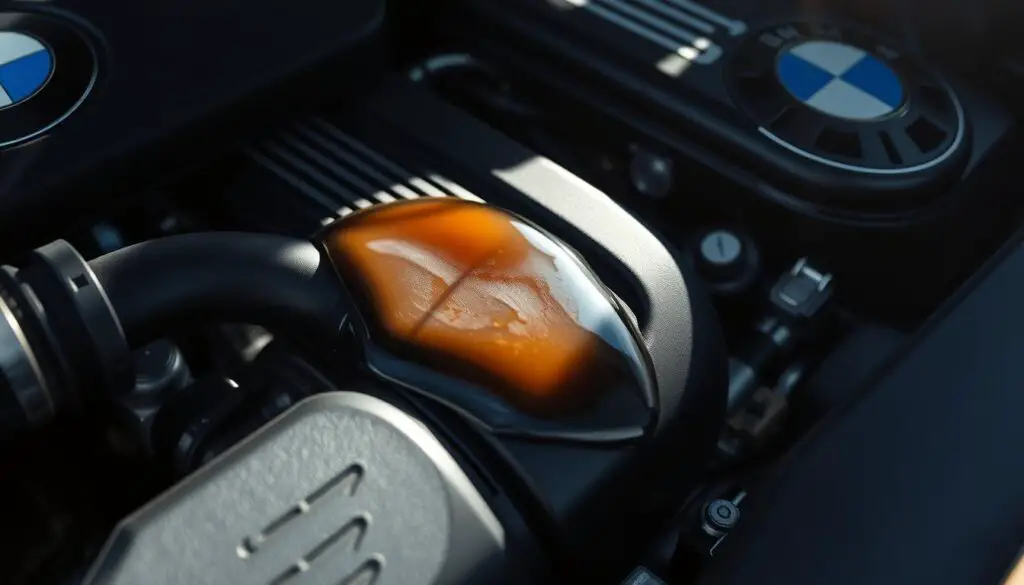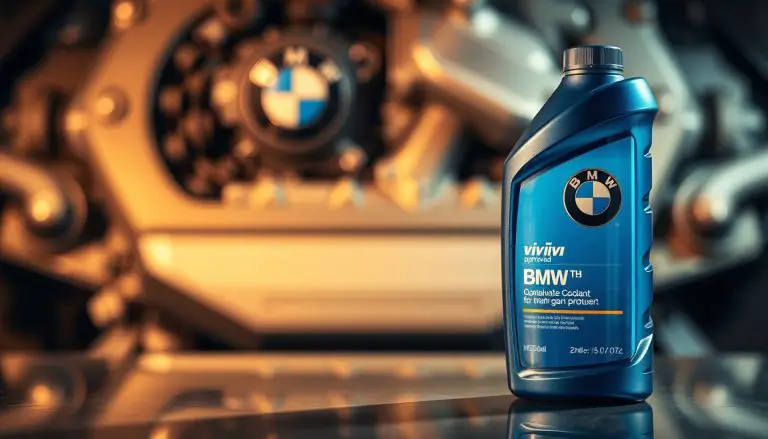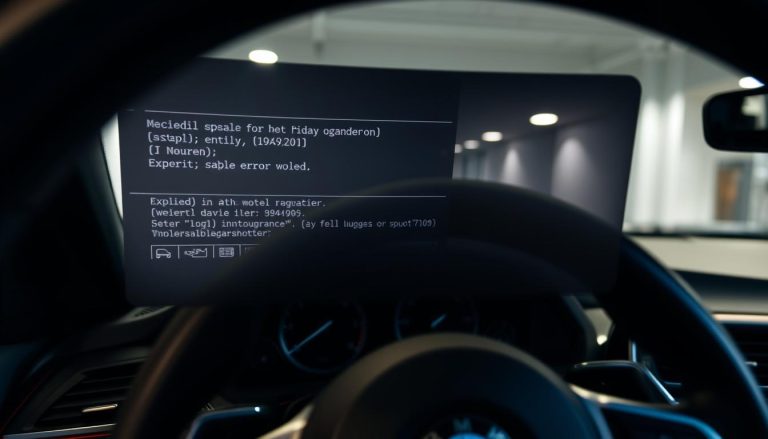The discovery of a coolant leak in your vehicle, despite the engine not overheating, can evoke considerable concern. This phenomenon is notably prevalent in BMW models, prompting numerous owners to seek clarification on its causes and potential repercussions of neglecting it.
A coolant leak poses a substantial risk to engine integrity if not rectified expeditiously. Grasping the underlying reasons for this issue is imperative for safeguarding your vehicle’s well-being and averting the financial burden of future repairs.
Key Takeaways
- Identifying the source of a coolant leak is essential for effective repair.
- Coolant leaks can cause significant damage if left unaddressed.
- Regular maintenance can help prevent coolant leaks.
- Understanding the symptoms can aid in early detection.
- Professional diagnosis is recommended for accurate identification.
Understanding the BMW Cooling System
The intricacies of the BMW cooling system are paramount for pinpointing coolant leak origins. This system, a cornerstone of vehicular functionality, exhibits a heightened complexity in BMWs.
Components of a BMW Cooling System
The BMW cooling system is comprised of essential elements: the electric water pump, radiator, thermostat, expansion tank, and a network of hoses and clamps. Each component is indispensable for the engine’s temperature equilibrium.

How the BMW Cooling System Functions
The system operates by circulating coolant through the engine, absorbing heat, and then dissipating it via the radiator. The electric water pump, a pivotal element, drives this coolant circulation.
The Role of the Electric Water Pump
The electric water pump is accountable for coolant circulation between the engine and radiator. Its electric nature offers superior control over coolant flow, boosting engine efficiency and mitigating overheating risks. An expert remarks,
“The electric water pump is a significant advancement in cooling system technology, offering improved performance and reliability.”
Grasping the synergy of these components empowers BMW proprietors to detect potential malfunctions early. Vigilance in maintenance and inspections is imperative for averting coolant leaks and preserving the vehicle’s longevity.
BMW Leaking Coolant but Not Overheating: The Phenomenon Explained
Coolant leaks in BMWs can manifest in a manner that defies conventional understanding, occurring without the engine’s temperature rising to alarming levels. This enigmatic phenomenon is rooted in the intricate design of the cooling system and the vehicle’s capacity to temporarily mitigate the effects of the loss. Such occurrences underscore the complexity of automotive engineering and the sophisticated mechanisms employed to maintain optimal engine performance.
The Science Behind Partial Coolant Loss
Partial coolant loss is characterized by a diminution in coolant levels, yet not to a degree that precipitates immediate overheating. This scenario arises from minor leaks within the system, which do not reach a threshold to prompt an immediate response. The BMW cooling system, with its redundancy, often conceals the initial signs of leakage, adding to the mystery surrounding this phenomenon.

Warning Signs Beyond Temperature Gauge
Drivers of BMWs must remain vigilant for signs that transcend the mere temperature gauge. These indicators include:
- Coolant level warnings on the dashboard
- Visible signs of leakage under the vehicle
- Unusual smells or steam from under the hood
Dashboard Warning Lights and Their Meanings
Dashboard warning lights serve as critical indicators of the vehicle’s health. For coolant-related malfunctions, common lights include:
| Warning Light | Meaning |
|---|---|
| Coolant Level Indicator | Low coolant level detected |
| Engine Temperature Light | Engine temperature is higher than normal |
| Check Engine Light | Could indicate a variety of issues, including cooling system problems |
Grasping the significance of these warning signs and dashboard indicators is paramount for the early detection and prevention of severe complications stemming from coolant leaks in BMWs.
Common Causes of Coolant Leaks in BMW Vehicles
Coolant leaks in BMW vehicles originate from diverse sources, requiring a thorough comprehension for accurate diagnosis and repair. The cooling system, a complex assembly of components, necessitates the identification of the primary cause of a leak to preserve the vehicle’s integrity.
Water Pump Failure
The water pump, pivotal in the cooling system, is responsible for coolant circulation throughout the engine. Failure of the water pump precipitates substantial leaks. Indicators of water pump failure include coolant leakage from the pump, often accompanied by symptoms of engine overheating.
Radiator and Thermostat Housing Issues
The radiator and thermostat housing are susceptible to coolant leaks. Cracks or damage to these components, often resulting from aging, corrosion, or excessive pressure, can lead to leaks. Regular examination of these areas is imperative to detect potential issues before they escalate.
Expansion Tank Problems
The expansion tank serves to hold excess coolant, accommodating its expansion and contraction as the engine temperature fluctuates. Damage or cracks in the expansion tank can precipitate leaks, typically manifesting as green or yellow fluid leakage from the tank area.
Hose and Clamp Deterioration
Hoses and clamps are crucial for maintaining the cooling system’s integrity. Over time, hoses can deteriorate, becoming brittle or developing cracks, while clamps can loosen, resulting in leaks. Regular inspection and replacement of these components are critical to prevent coolant leaks.
| Component | Common Issues | Symptoms |
|---|---|---|
| Water Pump | Failure, corrosion | Coolant leakage, engine overheating |
| Radiator and Thermostat Housing | Cracks, damage | Coolant leaks, temperature fluctuations |
| Expansion Tank | Cracks, damage | Visible coolant leaks |
| Hoses and Clamps | Deterioration, loosening | Coolant leaks, visible damage |
Grasping the common causes of coolant leaks in BMW vehicles empowers owners and technicians to diagnose and rectify issues more adeptly, ensuring the vehicle’s longevity and health.
BMW Model-Specific Coolant Leak Issues
Grasping the model-specific coolant leak issues in BMWs is imperative for owners to preemptively tackle potential problems. Each model harbors unique vulnerabilities within its cooling system, necessitating the identification of these specific weaknesses.
3 Series (E90/F30) Common Vulnerabilities
The BMW 3 Series, notably the E90 and F30 models, are beset by certain cooling system maladies. A prevalent issue is the failure of the water pump, which precipitates substantial coolant leaks. It is advisable to conduct regular inspections of the water pump and its electrical connections.
5 Series (E60/F10) Cooling System Weaknesses
The 5 Series, encompassing E60 and F10 models, frequently encounters problems associated with the radiator and thermostat housing. Cracks or corrosion in these components can induce leaks. It is crucial to ensure these parts remain in optimal condition.
X Series SUV Cooling Challenges
X Series SUVs encounter distinct cooling challenges due to their design and engine configuration. The expansion tank is a frequent point of failure, leading to coolant leaks. It is recommended to monitor the condition of the expansion tank and its cap.
N54/N55 Engine-Specific Concerns
BMW models equipped with N54/N55 engines are susceptible to specific cooling system issues. These engines are prone to hose deterioration and clamp failure, which can cause coolant leaks. It is necessary to conduct regular inspections of the condition of hoses and clamps.
| BMW Model | Common Coolant Leak Issues | Recommended Checks |
|---|---|---|
| 3 Series (E90/F30) | Water pump failure | Inspect water pump and electrical connections |
| 5 Series (E60/F10) | Radiator and thermostat housing issues | Check for cracks or corrosion |
| X Series SUV | Expansion tank failure | Monitor expansion tank condition |
| N54/N55 Engine | Hose deterioration and clamp failure | Regularly inspect hoses and clamps |
Case Study: 2015 BMW 328i with Mysterious Coolant Leak
A 2015 BMW 328i exhibited a perplexing coolant leak phenomenon, devoid of any overheating indicators. This case study explores the vehicle’s maintenance history, the initial symptoms, the owner’s experiences, the comprehensive investigation, and the definitive identification of the cause.
Vehicle History and Initial Symptoms
The vehicle, boasting a pristine maintenance record, underwent regular servicing according to the manufacturer’s guidelines. The owner, though, observed a steady coolant level decrease, without any concurrent temperature gauge elevation. Early identification of such leaks is paramount to avert engine damage.
Owner Experience and Failed Diagnostics
The owner first visited a dealership, where rudimentary diagnostics were conducted, yet no leak was identified. Disheartened by the issue’s persistence, the owner pursued a second evaluation. The elusive nature of the leak rendered it a formidable diagnostic challenge.
The Investigation Process
A more in-depth investigation ensued, encompassing cooling system pressure testing and a meticulous visual examination. This endeavor uncovered potential system vulnerabilities contributing to the leak.
Root Cause Identification
Through a detailed analysis, the root cause was pinpointed as a deteriorated hose clamp, allowing coolant leakage under specific conditions. Replacing the hose clamp rectified the issue, underscoring the significance of accurate diagnostics.
This case study elucidates the intricacies of diagnosing coolant leaks in contemporary vehicles, such as the BMW 328i. It highlights the necessity for exhaustive investigations and the potential for minor issues to precipitate substantial problems.
Diagnosing Coolant Leaks in Your BMW
Identifying the source of a coolant leak in your BMW necessitates a blend of visual inspection and the utilization of specialized tools. The initial step involves comprehending the components of your BMW’s cooling system and their interplay.
Visual Inspection Techniques
A meticulous visual inspection constitutes the initial phase in diagnosing a coolant leak. One must scrutinize the radiator, hoses, water pump, and thermostat housing for signs of leakage. Observations for visible cracks, rust, or damage are imperative, as these could signify the leak’s origin.
Pressure Testing the Cooling System
Pressure testing represents a more sophisticated diagnostic technique, involving the pressurization of the cooling system to pinpoint leaks. This approach is instrumental in identifying leaks that evade detection during visual inspections. BMW dealerships and independent mechanics frequently employ pressure testing kits for this purpose.
Using BMW-Specific Diagnostic Tools
BMW-specific diagnostic tools offer invaluable insights into the cooling system’s functionality. These tools are adept at uncovering issues such as faulty temperature sensors or malfunctioning coolant pumps.
Interpreting Diagnostic Trouble Codes
Accurate interpretation of diagnostic trouble codes is paramount when utilizing diagnostic tools. Codes associated with the cooling system can signal overheating, coolant level warnings, or temperature sensor malfunctions. Mastery over these codes is essential for precise diagnosis.
| Diagnostic Tool | Purpose | Common Issues Identified |
|---|---|---|
| Pressure Testing Kit | Pressurizes the cooling system to detect leaks | Leaks in radiator, hoses, water pump |
| BMW-Specific Scanner | Reads diagnostic trouble codes | Coolant temperature sensor faults, coolant pump failures |
| Visual Inspection Kit | Enhances visual inspection with UV dye | Leaks in hard-to-see areas, minor seepage |
By integrating these diagnostic methodologies, BMW proprietors can effectively pinpoint and rectify coolant leaks, ensuring the efficient operation of their vehicle’s cooling system.
DIY Repairs for Minor BMW Coolant Leaks
Minor coolant leaks in your BMW can often be addressed with DIY repairs, provided you have the right tools and knowledge. Before diving into repairs, it’s crucial to identify the source of the leak accurately.
Tools and Materials Needed
To start, you’ll need a few essential tools and materials, including a coolant pressure test kit, replacement hoses or clamps if necessary, and the correct type of coolant for your BMW.
Step-by-Step Repair Procedures
The repair process typically begins with a thorough inspection to locate the leak. Once identified, you can proceed with the necessary repairs, which may involve tightening loose clamps, replacing damaged hoses, or fixing leaks in the radiator or water pump.
- Inspect the cooling system for signs of leaks or damage.
- Use a pressure test kit to help identify the source of the leak.
- Replace any damaged components with OEM or equivalent parts.
When to Avoid DIY Repairs
If the leak is significant or you’re unsure about the diagnosis, it’s advisable to seek professional help. Complex issues, such as internal engine leaks, require specialized tools and expertise.
Safety Precautions When Working with Coolant
Always handle coolant with care, as it can be toxic. Wear protective gloves and eyewear, and ensure the work area is well-ventilated. Dispose of used coolant and materials responsibly.
Professional Repair Options and Costs
The determination of the appropriate venue for the rectification of a BMW coolant leak necessitates a thorough evaluation of various professional offerings. BMW proprietors are confronted with a dichotomy: the recourse to dealership services versus the engagement of independent BMW specialists.
Dealership vs. Independent BMW Specialist Comparison
Dealership services boast the benefit of technicians who are trained by the manufacturer and utilize genuine OEM components. This, albeit, is accompanied by a higher cost. In contrast, independent BMW specialists present a more economical alternative, albeit without a compromise in quality.
Key differences between dealership and independent services include:
- Cost: Independent specialists often charge less.
- Warranty: Dealership repairs usually come with a warranty.
- Parts: Dealerships use OEM parts, while independents may use aftermarket parts.
Typical Repair Costs by Component
An understanding of the typical expenditures associated with various components is crucial for BMW owners to effectively plan their repair budgets.
| Component | Average Cost |
|---|---|
| Water Pump | $500-$800 |
| Radiator | $300-$600 |
| Thermostat | $200-$400 |
Warranty Considerations for Cooling System Repairs
Warranty implications must be meticulously considered when selecting a repair service. Repairs conducted at dealerships are typically accompanied by a warranty, offering BMW owners a measure of assurance.
Preventative Maintenance to Avoid BMW Coolant Leaks
BMW owners can circumvent the inconvenience and financial burden of coolant leaks by engaging in preventative maintenance. By diligently adhering to routine inspections and maintenance activities, the likelihood of coolant leaks is substantially diminished. This proactive approach ensures the durability and optimal performance of the vehicle’s cooling apparatus.
Recommended Maintenance Schedule
Compliance with a meticulously crafted maintenance schedule is paramount in averting coolant leaks. BMW advocates for the periodic examination of the cooling system’s components, such as the water pump, radiator, thermostat housing, and hoses. This should occur every 50,000 to 100,000 miles, contingent upon the model and year of your BMW.
Quality of Coolant and Proper Mixing Ratios
The utilization of premium coolant, conforming to BMW’s standards, is indispensable. Equally critical is the adherence to the prescribed coolant-to-water mixing ratio, typically a 50/50 blend. Deviation from these guidelines can precipitate corrosion, diminish cooling efficacy, or inflict harm upon the cooling system’s components.
Cooling System Flushes and Their Importance
Consistent cooling system flushes are a cornerstone of preventative maintenance. These flushes serve to expel contaminants and outdated coolant, which can induce corrosion and damage. It is advisable to undertake cooling system flushes every 30,000 to 50,000 miles or as stipulated in your BMW’s maintenance regimen.
As underscored by BMW specialists, “Regular maintenance not only prevents coolant leaks but also ensures the overall health and efficiency of the vehicle’s cooling system.”
Long-Term Implications of Ignoring Coolant Leaks
Coolant leaks, if neglected, can initiate a chain of complications for BMW proprietors. The repercussions of disregarding such leaks transcend immediate concerns, encompassing long-term damage that is both financially burdensome and detrimental to the vehicle’s integrity.
Engine Damage Risks
The most critical peril linked to coolant leaks is engine damage. Coolant is indispensable for engine temperature regulation. A leak can precipitate overheating, a condition that, if not rectified expeditiously, may result in severe engine damage, including head gasket failure and engine seizure.
Impact on Vehicle Resale Value
Disregarding coolant leaks can also impede your BMW’s resale value. A history of coolant leaks or associated engine damage can dissuade prospective buyers, thus diminishing resale value. It is imperative to maintain the cooling system’s integrity to preserve the vehicle’s value.
Environmental Considerations of Coolant Leakage
Coolant leaks pose not only vehicular but also environmental challenges. Coolants can pollute soil and water if not disposed of correctly. Thus, it is vital to address leaks promptly and ensure that any coolant disposal is conducted in an environmentally conscientious manner.
| Issue | Short-Term Impact | Long-Term Consequences |
|---|---|---|
| Coolant Leak | Visible leak, slight temperature fluctuation | Engine damage, decreased resale value, environmental harm |
| Engine Overheating | Warning lights, slight engine strain | Severe engine damage, costly repairs |
Conclusion
The intricacies of a BMW leaking coolant but not overheating necessitate a deep understanding to preserve the vehicle’s performance and longevity. This discourse has delved into the complexities of the BMW cooling system, identified common causes of coolant leaks, and underscored the criticality of timely diagnosis and repair.
The occurrence of coolant leakage without overheating can stem from multiple factors, including partial coolant loss and the vehicle’s capacity to adapt to such losses. Neglecting these leaks, though, can precipitate severe engine damage, diminish resale value, and pose environmental risks.
Recognizing the early warning signs, beyond the mere temperature gauge, and adhering to a rigorous maintenance regimen are pivotal for BMW owners. Whether through self-repair for minor leaks or professional intervention for more intricate problems, addressing coolant leaks expeditiously is imperative.
In summary, a BMW leaking coolant but not overheating constitutes a critical issue that demands meticulous attention and a comprehensive grasp of the vehicle’s cooling system. Through continuous education and proactive maintenance, owners can guarantee their BMW operates with optimal efficiency and performance.
FAQ
What are the common signs of a coolant leak in my BMW?
Indicators of a coolant leak include a noticeable decrease in coolant level, visible fluid leakage beneath the vehicle, and illuminated dashboard warning lights. A sweet, syrupy odor emanating from the coolant is also a telltale sign.
Can I drive my BMW if it’s leaking coolant but not overheating?
Despite the absence of overheating, it is advisable against driving a BMW with a coolant leak. Such leaks can precipitate severe engine damage, even when the temperature gauge appears within normal parameters.
How do I check the coolant level in my BMW?
To verify the coolant level, locate the coolant reservoir, a transparent plastic container with level indicators. Ensure the engine is cool before checking that the level falls between the minimum and maximum marks.
What is the recommended coolant type for BMW vehicles?
BMW advocates for the use of a specific coolant type, namely ethylene glycol-based coolants that meet their standards. Always consult your owner’s manual or seek guidance from a dealership or certified mechanic for confirmation.
Can I repair a coolant leak myself, or should I seek professional help?
Minor coolant leaks might be addressed with DIY techniques, but significant leaks or those necessitating component replacement are best left to a professional mechanic. This is crucial, given the complexity of BMW’s cooling systems.
How often should I inspect my BMW’s cooling system for leaks?
It is advisable to conduct regular inspections during routine maintenance, such as oil changes or every 12,000 to 15,000 miles. Vigilance for signs of leaks, as mentioned earlier, is also paramount.
What are the potential consequences of ignoring a coolant leak in my BMW?
Neglecting a coolant leak can result in severe engine damage, substantial repair costs, a diminished resale value, and environmental harm due to coolant leakage.
Are certain BMW models more prone to coolant leaks than others?
Yes, certain models, including the 3 Series (E90/F30), 5 Series (E60/F10), and X Series SUVs, exhibit vulnerabilities in their cooling systems. Models equipped with N54/N55 engines also have specific concerns regarding coolant leaks.
How much does it typically cost to repair a coolant leak in a BMW?
Repair costs are highly variable, influenced by the leak’s source, the components involved, and labor rates. On average, expenses can range from a few hundred to several thousand dollars, encompassing parts and labor.
Can a coolant leak be a sign of a larger issue with my BMW’s engine?
Yes, a coolant leak can sometimes signal a more critical problem, such as a failing water pump, a cracked engine block, or cylinder head issues. A comprehensive diagnosis by a qualified mechanic is essential to identify the underlying cause.


